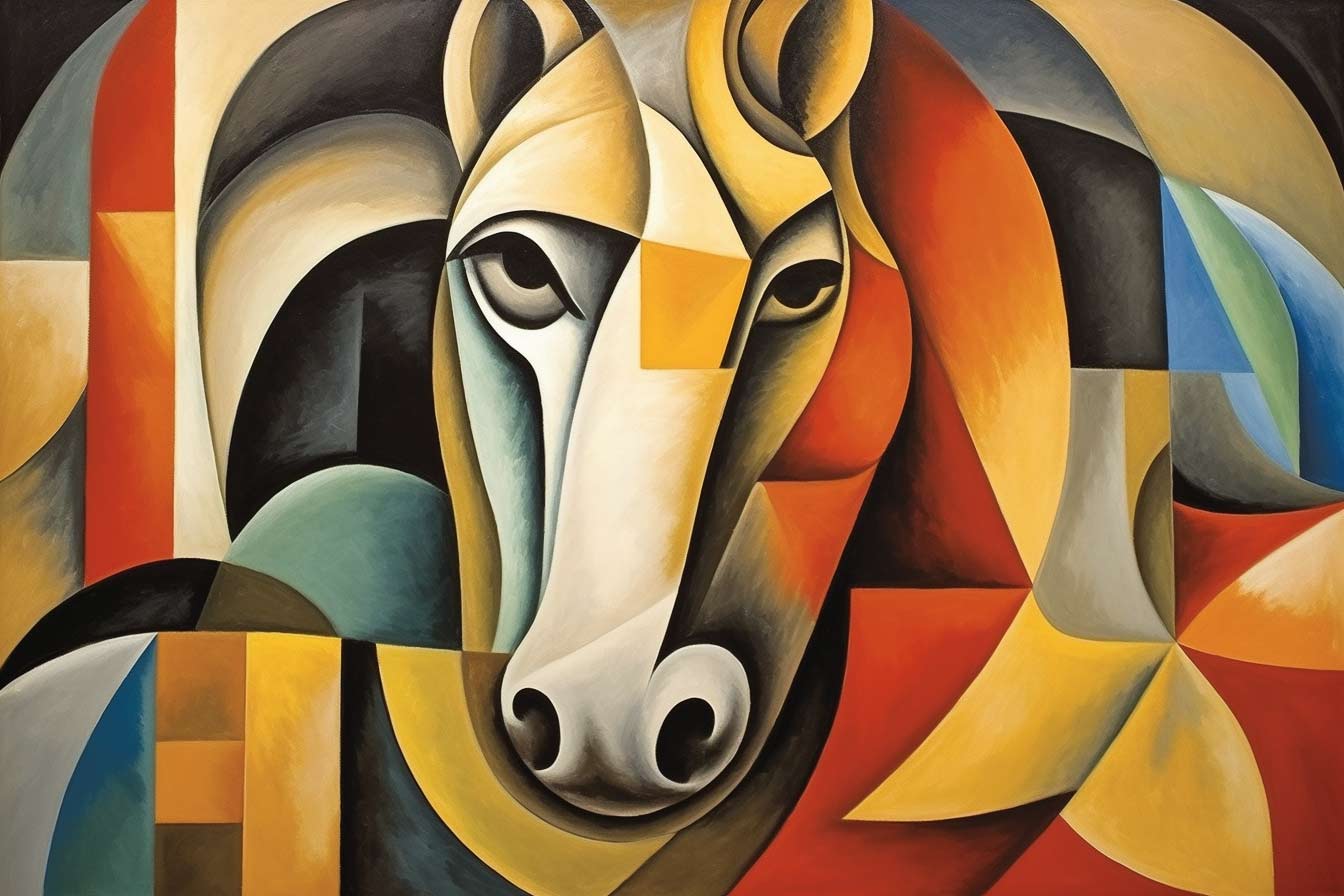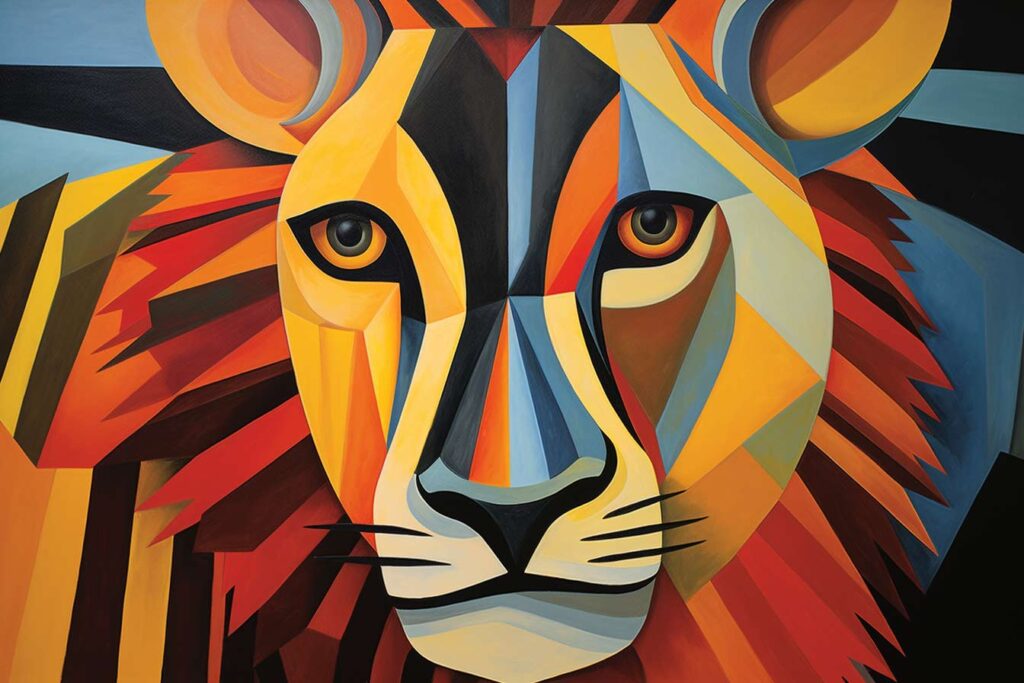The Art of Simplification and Recognition
The world of art, a realm where imagination meets representation, has always been in a dynamic dance of capturing the essence of the observed. From the detailed masterpieces of the Renaissance to the bold strokes of Impressionism, artists have forever sought means to represent and re-imagine the world around them. And in this tapestry of exploration, emerges the realm of Protocubism, where the world is seen not in its detailed entirety, but its distilled essence.
In this quiet yet profound artistic journey, we find the wild and the majestic — animals, from the sprawling savannahs to the dense jungles — distilled to their essential geometric forms in Protocubism. The lion is no longer a creature of intricate fur and sinew, but an ensemble of shapes and angles, each telling a part of its majestic tale.
Nature’s Geometry: The Heartbeat of the Wild
Just as Nature herself is governed by laws of symmetry and proportion, so does Protocubist art seize these tenets to depict the wildlife. An elephant, for instance, becomes a play of rectangles and circles, its sheer size and might captured not in elaborate details, but through weighty squares and robust triangles.
Yet, within these geometric interpretations, there remains the spirit, the essence of the beast. The angles might be sharp, the shapes defined, but they radiate the same power, the same grace, the innate spirit of the animal. They are not mere constructs of shapes, but soulful renditions of nature’s most splendid creatures.
Echoes of Ancient Understanding
This return to geometric forms is reminiscent of ancient cultures, which too sought the spirit of their surroundings through shapes and patterns. Temples, artifacts, and scriptures often showcased animals in their simplest forms, capturing their energy and ethos without delving into elaborate depictions.
In Protocubist Animals, we find a similar echo, a return to the foundational, a celebration of the primal. Yet, it’s done with an understanding that only modern art could provide, a union of the past’s wisdom with today’s artistry.
A Dance of Recognition
The beauty of Protocubism lies not just in its simplicity but in the challenge it poses to the observer. One is not merely looking at an artwork but engaging in a dialogue. The scattered shapes beckon the observer to piece them together, to find the lion’s roar in a triangle, the elephant’s grace in a circle.
It is a dance of recognition, where memory and cognition play with art, where the observer becomes a participant, not just an onlooker.
In conclusion, Protocubist Animals beckon us to a world where geometry and spirit intertwine. Where the essence of the wild is captured not in detail but in form. It reminds us that sometimes, to truly see and understand, one must simplify, distill, and look beyond the obvious, into the very soul of the subject.

